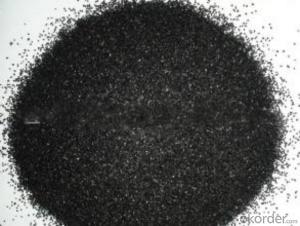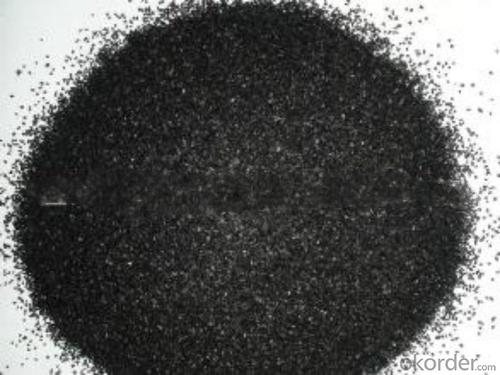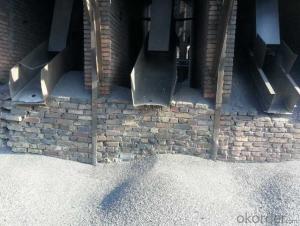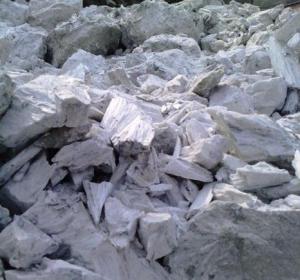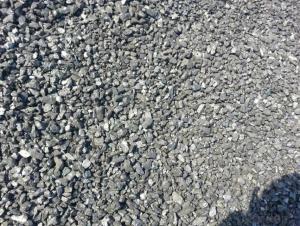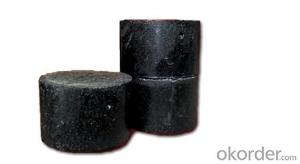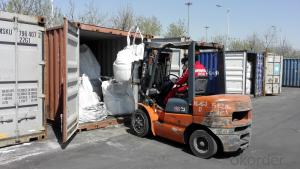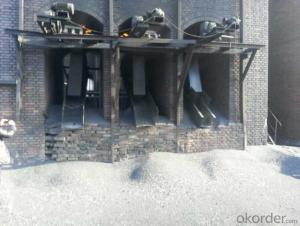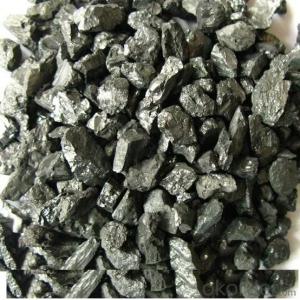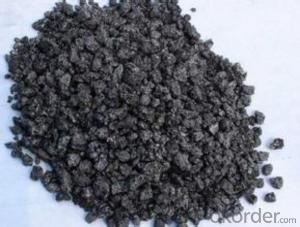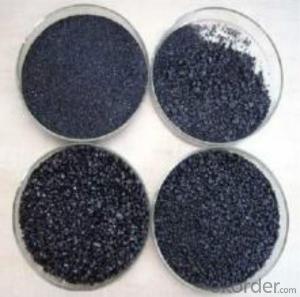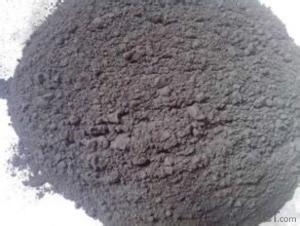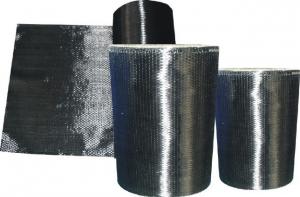FC 94% 10-40MM Calciend anthracite as charging coke
- Loading Port:
- Dalian
- Payment Terms:
- TT OR LC
- Min Order Qty:
- 21.8
- Supply Capability:
- 1018 m.t./month
OKorder Service Pledge
OKorder Financial Service
You Might Also Like
Introduction:
Calcined anthracite can be called carbon additive, carbon raiser, recarburizer, injection coke, charging coke, gas calcined anthracite.It is playing more and more important role in the industry
Best quality Anthracite as raw materials through high temperature calcined at over 2000℃ by the DC electric calciner with results in eliminating the moisture and volatile matter from Anthracite efficiently, improving the density and the electric conductivity and strengthening the mechanical strength and anti-oxidation. It has good characteristics with low ash, low resistivity, low sulphur, high carbon and high density. It is the best material for high quality carbon products. It is used as carbon additive in steel industry or fuel.
Features:
G-High Calcined Anthracite is produced when Anthracite is calcined under the temperature of 1240°C in vertical shaft furnaces. G-High Calcined Anthracite is mainly used in electric steel ovens, water filtering, rust removal in shipbuilding and production of carbon material. Our products are usde worldwide.
Specifications:
F.C.% | 95MIN | 94MIN | 93MIN | 92MIN | 90MIN | 85MIN | 84MIN |
ASH % | 4MAX | 5MAX | 6 MAX | 6.5MAX | 8.5MAX | 12MAX | 13MAX |
V.M.% | 1 MAX | 1MAX | 1.0MAX | 1.5MAX | 1.5MAX | 3 MAX | 3 MAX |
SULFUR % | 0.3MAX | 0.3MAX | 0.3MAX | 0.35MAX | 0.35MAX | 0.5MAX | 0.5MAX |
MOISTURE % | 0.5MAX | 0.5MAX | 0.5MAX | 0.5MAX | 0.5MAX | 1MAX | 1MAX |
Pictures
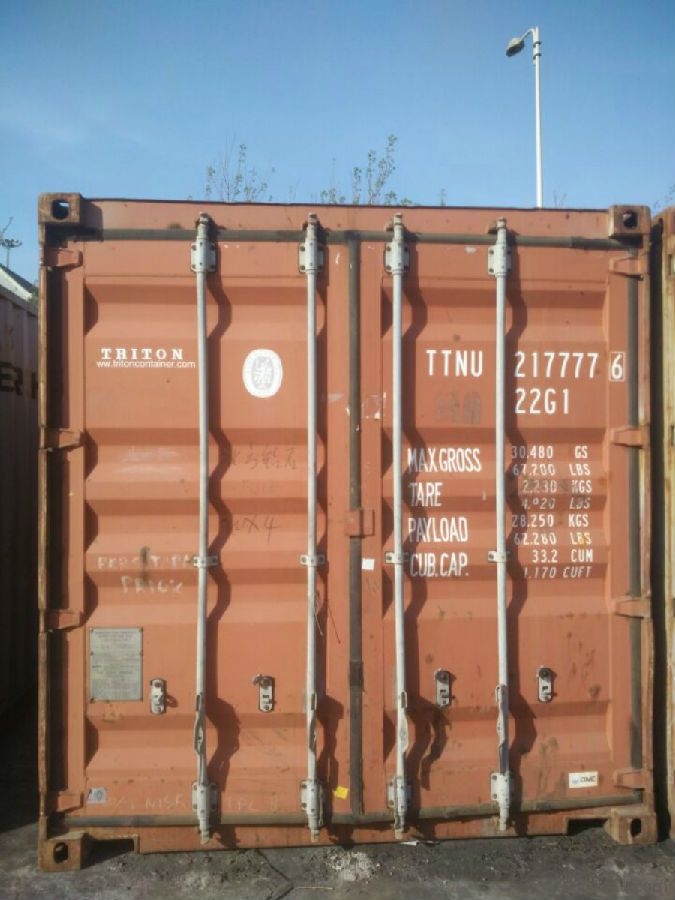
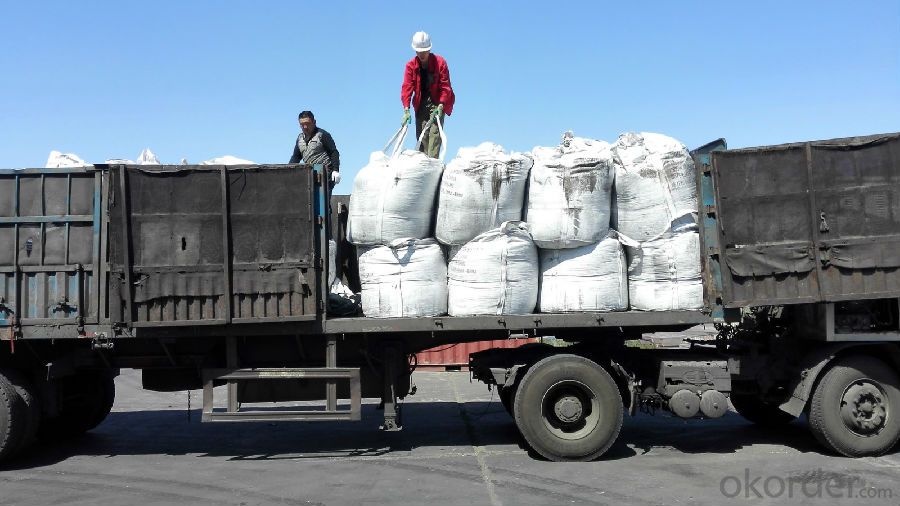
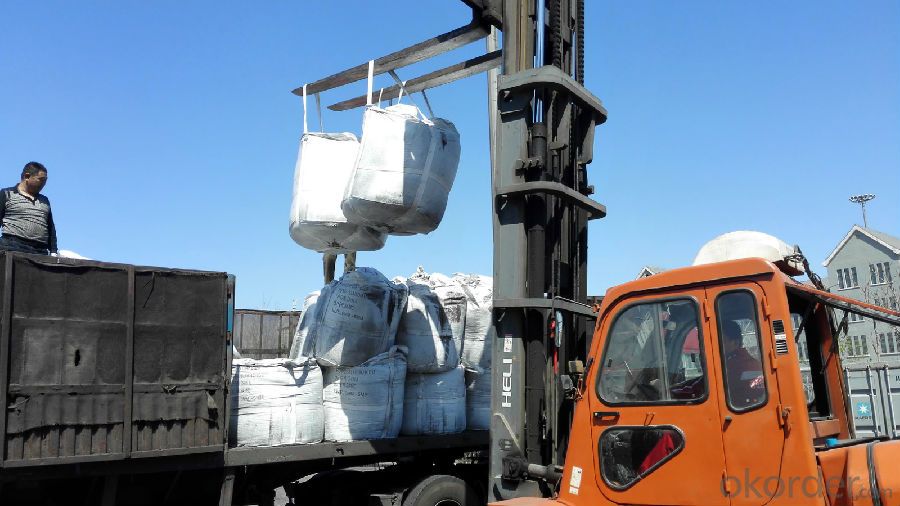
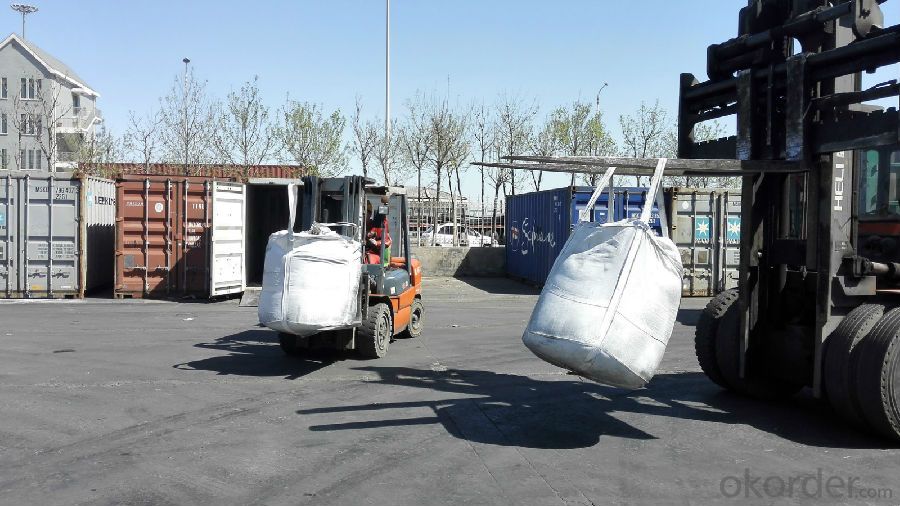
FAQ:
Packing:
(1). Waterproof jumbo bags: 800kgs~1100kgs/ bag according to different grain sizes;
(2). Waterproof PP woven bags / Paper bags: 5kg / 7.5kg / 12.5kg / 20kg / 25kg / 30kg / 50kg small bags;
(3). Small bags into jumbo bags: waterproof PP woven bags / paper bags in 800kg ~1100kg jumbo bags.
Payment terms
20% down payment and 80% against copy of B/L.
Workable LC at sight,
- Q: Where do I buy DNF premium advanced carbon?
- And other activities, holidays, gift packs and so on, in the mall to buy, but now are colorless strengthening! Want to really want to use RMB to strengthen a little higher, directly to strengthen the volume!
- Q: What are the basic structures of iron carbon alloys?
- The symbol is A. The stable austenite has a temperature of 727 DEG C, when the solubility of carbon is 0.77%, the strength, hardness and plasticity of austenite are very good, which is the organization required for high temperature forging or rolling of most steels.Cementite: a metallic compound of iron and carbon with a carbon content of 6.69%. The formula Fe3C is expressed in symbolic Cm. High hardness, poor plasticity, hard and brittle, the number of cementite increases, strength and hardness increase, while plasticity decreases.
- Q: Why is the longer the carbon chain, the better the hydrophobic properties?
- I only know that the carbon chain is hydrophobic, so the longer it stronger. But why hydrophobic carbon chain is hydrophobic, hydrocarbon is because of hydrophobic group, the hydrophobic alkyl and why? I don't know, can be very the problem of bai123 (inline station TA) the longer the pure carbon chain, the better the symmetry, the worse the polarity, showing a strong hydrophobic, lqn513 (in station contact TA) similar, compatible ah, polarity is different, compatibility is different, zhu2du1314 (station contact TA), this is obvious......
- Q: What is carbon coffee fiber?
- The carbon coffee fiber uses the coffee residue left after the coffee and is made into crystal by calcining, then ground into nanometer powder and added to the polyester fiber to produce a functional polyester staple, a coffee carbon fiber.
- Q: when to use hard carbon, and when to use soft carbon. Neutral charcoal can play what role? Thank you.
- Hard charcoal first used to draft the draft, then is depicted. On the tone of most people love compared with neutral charcoal, personal love. At the end of the characterization, soft and hard together. That's probably it.
- Q: What role does carbon play in the carbon cycle?
- Carbon plays a crucial role in the carbon cycle as it is the key element that cycles through various reservoirs on Earth. It is present in both organic and inorganic forms and moves between the atmosphere, oceans, land, and living organisms. The carbon cycle is a complex process that involves several interconnected processes, including photosynthesis, respiration, decomposition, and combustion. In the atmosphere, carbon exists primarily as carbon dioxide (CO2) gas, which is essential for photosynthesis. Green plants and algae absorb CO2 during photosynthesis, converting it into organic compounds such as glucose and releasing oxygen as a byproduct. This process helps to regulate the amount of carbon dioxide in the atmosphere and provides the foundation for the food chain. Through respiration, living organisms break down organic compounds to release energy, producing carbon dioxide as a waste product. This carbon dioxide can be immediately reused by plants during photosynthesis, completing the cycle. Additionally, when organisms die, their remains are broken down by decomposers, such as bacteria and fungi, which release carbon dioxide back into the atmosphere. The carbon cycle also involves the transfer of carbon to and from the oceans. Carbon dioxide dissolves in seawater, where it can be taken up by marine organisms, such as phytoplankton and corals, during photosynthesis. Over time, the remains of these organisms sink to the ocean floor and can become locked away in sediments, forming fossil fuels like coal, oil, and natural gas. Through geological processes, these fossil fuels can be released back into the atmosphere when burned, contributing to increased carbon dioxide levels. Human activities, particularly the burning of fossil fuels and deforestation, have significantly impacted the carbon cycle. Excessive carbon dioxide emissions from these activities have led to an imbalance in the cycle, causing an increase in atmospheric carbon dioxide concentrations and contributing to global climate change. Overall, carbon plays a critical role in the carbon cycle as it is the fundamental building block of life and the key element that cycles through various reservoirs, regulating Earth's climate and sustaining life on our planet.
- Q: The difference between graphite and carbon
- There are three kinds of carbon allotropes, namely diamond, graphite and amorphous carbon.Graphite is a crystalline mineral of carbonaceous elements, and its crystalline framework is hexagonal layered structure
- Q: How is carbon used in the production of construction materials?
- Carbon is used in the production of construction materials in several ways. One of the most common applications is in the production of steel, which is a vital material in the construction industry. Carbon is a key component in the iron and steel-making process, as it is combined with iron to create a stronger and more durable material. The addition of carbon to iron forms a compound known as steel, which has excellent structural properties and can be used to construct various components of buildings, such as beams, columns, and reinforcement bars. Additionally, carbon fibers are increasingly being used in the production of construction materials. Carbon fibers are lightweight, yet incredibly strong and stiff, making them ideal for reinforcing concrete and other materials. When carbon fibers are added to concrete, they enhance its strength and durability by reducing cracking and improving its resistance to impact and corrosion. This allows for the construction of structures that are more resilient and longer-lasting. Furthermore, carbon is used in the production of composite materials, which are becoming popular in construction. Carbon composites are made by combining carbon fibers with a polymer matrix, resulting in a material that is lightweight, yet strong and rigid. These composites are used in various construction applications, such as building panels, roofing, and bridges, as they offer high strength-to-weight ratios and excellent resistance to environmental factors. In summary, carbon plays a crucial role in the production of construction materials. It is used in the creation of steel, which is a fundamental component of buildings, and its fibers are employed to reinforce concrete and other materials. Additionally, carbon composites provide lightweight and high-strength solutions for construction applications. By harnessing the properties of carbon, construction materials can be made stronger, more durable, and more sustainable.
- Q: Wrought iron, steel, cast iron, cast iron, according to the content of the carbon? How many?
- Iron is almost a smelting furnace and cast iron products. Two smelting products, generally with silicon, manganese and other elements in pig iron based, often also need to be nurtured, spheroidization, compacted and heat treatment process.
- Q: What is carbon monoxide poisoning?
- Carbon monoxide poisoning is a potentially deadly condition that occurs when an individual inhales or is exposed to high levels of carbon monoxide gas. Carbon monoxide is a colorless, odorless, and tasteless gas that is produced from the incomplete combustion of carbon-based fuels such as gasoline, natural gas, coal, and wood. When carbon monoxide is inhaled, it enters the bloodstream and binds to hemoglobin, the molecule responsible for carrying oxygen throughout the body. This binding process prevents oxygen from being adequately delivered to vital organs and tissues, leading to oxygen deprivation or hypoxia. The symptoms of carbon monoxide poisoning can vary depending on the level and duration of exposure, but they often resemble those of the flu, including headache, dizziness, weakness, nausea, vomiting, confusion, and loss of consciousness. Prolonged exposure to high levels of carbon monoxide can result in severe brain damage, organ failure, and even death. It is crucial to take immediate action if carbon monoxide poisoning is suspected. This includes removing oneself from the source of exposure, seeking fresh air, and contacting emergency services for medical attention. Additionally, it is essential to identify and address the source of carbon monoxide, such as faulty heating systems, blocked chimneys, or malfunctioning appliances, to prevent further exposure and ensure the safety of the environment. Prevention is key in avoiding carbon monoxide poisoning. Regularly maintaining and inspecting fuel-burning appliances, installing carbon monoxide detectors in homes and buildings, and ensuring proper ventilation are vital steps to minimize the risk of exposure. Education and awareness about the dangers of carbon monoxide and the necessary precautions can help save lives and protect individuals from this silent killer.
Send your message to us
FC 94% 10-40MM Calciend anthracite as charging coke
- Loading Port:
- Dalian
- Payment Terms:
- TT OR LC
- Min Order Qty:
- 21.8
- Supply Capability:
- 1018 m.t./month
OKorder Service Pledge
OKorder Financial Service
Similar products
Hot products
Hot Searches
